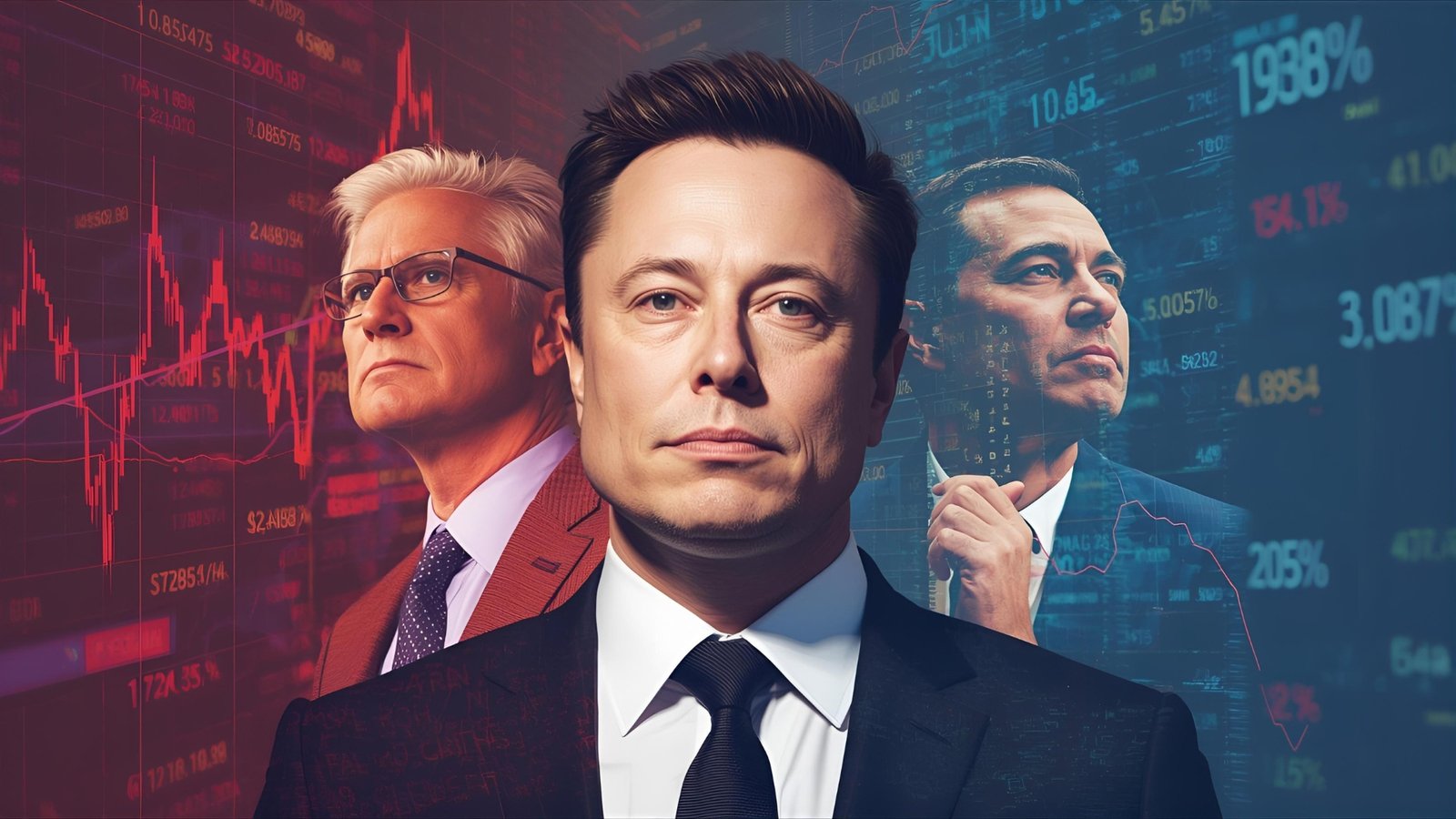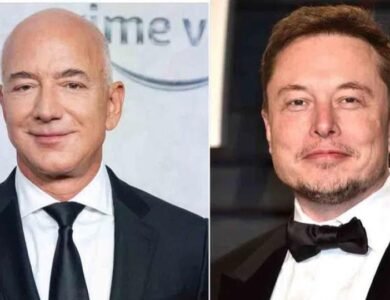
Few phrases spike search interest like Elon Musk’s net worth. That’s because it changes fast and, lately, it has changed history. On October 1, 2025, Forbes’ real-time tracker briefly placed Musk at roughly $500.1 billion, making him the first person to hit the half-trillion mark. Reuters corroborated the milestone and the drivers behind it: a rebound in Tesla shares, surging valuations for SpaceX and AI venture xAI, and Musk’s ownership position of more than 12.4% of Tesla as of mid-September.
Bloomberg’s Billionaires Index—which updates after every New York trading day—often lands on a slightly different figure because its methodology and private-company valuation inputs can vary from Forbes’ approach. This guide gives you a comprehensive, human-readable breakdown of Elon Musk’s net worth today: what it is, how it’s calculated, why different sources disagree, how each asset contributes, and what could push his wealth higher or lower over the coming year.
What is Elon Musk’s net worth right now?
As of October 2, 2025, the most widely cited “real-time” snapshot is Forbes’ reading, which on October 1 printed approximately $500.1 billion before end-of-day swings nudged it slightly lower; local coverage noted a close of around $499.1 billion that same evening as prices settled, according to the Houston Chronicle. Reuters’ report ties the latest jump to Tesla’s rally this year and rising marks for Musk’s private holdings, notably SpaceX and xAI.
Bloomberg’s Billionaires Index tracks a dynamic figure that can differ from Forbes’ number on any given day, thanks to distinct valuation models and private-market inputs. Bloomberg also emphasizes that its billionaire totals are updated daily after the markets close, underscoring the point that Elon Musk’s net worth is best understood as a fast-moving range rather than a single, static figure.
Why do sources disagree on Elon Musk’s net worth?
Methodology matters: public vs. private, discounts, and timing
Forbes Real-Time Billionaires tends to publish intraday shifts, capturing mid-session market moves when news breaks, whereas Bloomberg tallies its index after the close. Both apply different private-company valuation assumptions to assets like SpaceX and xAI, and both adjust stakes for options, loans, and pledges. That’s why you might see Forbes briefly show the half-trillion mark while Bloomberg is lower on the same day.

In December 2024, for example, Forbes raised Musk’s total to above $400 billion after adjusting its SpaceX valuation estimate; it also explained how options, pledges, and court rulings affect its valuation. The takeaway is simple: Elon Musk’s net worth is a model built from data points that don’t constantly update at the same cadence.
The building blocks of Elon Musk’s fortune
Tesla: the core engine of volatility
For all the headlines, Tesla remains the beating heart of Elon Musk’s net worth. Tesla’s market capitalization hovered around $1.43–$1.47 trillion in late September and on October 1, 2025, depending on the tracker you use, StockAnalysisCompaniesMarketCapmarketcap.company. Because Musk owns more than 12.4% of Tesla, swings in the stock can move his total wealth by billions in a single day.
This year’s rally was fueled by perceptions of renewed focus at Tesla and a bolder push toward AI and robotics, with Musk even purchasing about $1 billion of Tesla shares to signal confidence, according to Reuters. However, Tesla still faces pressure from slower auto sales and margin compression, which makes it one of the more volatile anchors for Elon Musk’s net worth.
SpaceX: private-market momentum
No less important is SpaceX, whose valuation has climbed sharply in secondary transactions and reported insider tender offers. Over the summer, multiple outlets, citing Bloomberg’s reporting, noted discussions around a valuation of approximately $400 billion for SpaceX through new share sales to insiders. Forbes’ profile page also cites $400 billion, based on an August 2025 tender, and estimates Musk’s ownership at approximately 42%. Because SpaceX is a private company, small changes in assumed valuation—or in the discount analysts apply to private shares—can translate into tens of billions of dollars in movement in modeled net worth.
xAI: the rising AI wildcard
Musk’s AI startup xAI has seen a rapid re-rating in 2025. Reuters reported a $75 billion mark in July, with speculation about higher figures later in the year (which Musk pushed back on), and reiterated that rising AI valuations are part of the reason Elon Musk’s net worth crossed $500 billion. As with SpaceX, private-market inputs and methodology choices can widen the gap between Forbes and Bloomberg on any given day.
Other holdings: X (formerly Twitter), The Boring Company, Neuralink
Rounding out the portfolio are X (Twitter), The Boring Company, and Neuralink. Forbes has periodically updated these estimates, and while they are smaller slices relative to Tesla and SpaceX, they still contribute meaningful billions—especially when private-market sentiment is strong. For searchers tracking Elon Musk’s net worth, these holdings matter because private-valuation moves often arrive in chunky, step-change updates rather than smooth daily ticks.
How real-time trackers compute billionaire wealth
Forbes vs. Bloomberg: same goal, different dials
![]()
Both teams rebuild the net worth model from public filings, trading data, and private-market indications. Bloomberg emphasizes the after-close recalculation and the transparency of its per-person methodology pages; Forbes publishes a continuously refreshed real-time list and updates individual profiles when there’s a credible new private valuation or corporate event. For readers, the key is to treat Elon Musk’s net worth as a band that reflects the time of day, the source’s model, and how aggressively it marks private holdings.
What pushed Elon Musk over the $500B line?
According to Reuters’ write-up of October 1, 2025, the half-trillion headline stemmed from a combination of factors, including a 2025 Tesla rebound, stronger marks for SpaceX and xAI, and confirmation that Musk still holds a double-digit stake in Tesla. The article also notes an internal $1 trillion compensation plan proposed by Tesla’s board, pointing to an ambitious multi-year vision centered on the execution of AI and robotics. In other words, the catalyst wasn’t just EV deliveries; it was the story of Tesla’s next chapter—software, autonomy, and humanoid robotics—plus the satellite internet and launch economics at SpaceX, as well as the AI platform optionality at xAI.
Is Elon Musk really the wealthiest person on Earth?
On most days in 2025, yes—but leadership has occasionally flipped intraday as tech mega-caps and private valuations churn. The Bloomberg Billionaires Index and Forbes Real-Time lists have, at times, shown challengers like Larry Ellison briefly taking the top slot before the market’s next move. Reuters’ October 1 piece lists Ellison at roughly $350.7 billion on that day, behind Musk’s reading. Because the leaderboard is mark-to-market, a one-day swing in any of these stocks can shuffle rankings.
How concentrated is his wealth, and what are the risks?
Single-asset exposure and macro sensitivity
Elon musk net worth is highly concentrated in technology-linked assets. That means it is exposed to equity multiple compression, interest-rate shocks, and sector rotations. Tesla’s margins, unit demand in EVs, progress in FSD and robotics, and regulatory narratives all feed into the valuation that ultimately drives Musk’s daily total.
Private-market repricing
For SpaceX and xAI, the risk is in tender frequency and investor appetite. If private buyers step back—or apply steeper discounts—headline valuations can retrace. Conversely, strong secondary demand or a blockbuster insider round can add tens of billions to modeled wealth in a stroke.
Governance and compensation outcomes
Reuters reports a proposed $1 trillion compensation plan for Musk, accompanied by ambitious operational targets. Approval and achievement of such packages can meaningfully change Elon Musk’s net worth over time. Still, they can also result in adverse rulings or plan modifications (as we saw with option-award litigation in prior years).
The role of buy-ins, pledges, and liquidity
Because much of Musk’s wealth is in the form of equity, not cash, liquidity depends on sales, loans, or margin against shares. Forbes has repeatedly explained how it discounts pledged shares and adjusts for options and debt, especially after litigation reshaped older award structures. These adjustments help explain why Elon Musk’s net worth figures differ across outlets, even when the underlying companies haven’t changed hands.
Why Tesla, SpaceX, and xAI create an amplification effect
When AI optimism boosts Tesla’s narrative, it can shift the entire industry. Tesla is now commonly framed as an AI and robotics platform—not just an automaker—so investors extrapolate software margins and subscription revenue into the price. Simultaneously, Starlink scale and launch cadence can justify higher SpaceX marks, and xAI can catch a rising AI-infra tide. The combined effect is a multi-asset amplification that helped push Elon Musk’s net worth to the $500B milestone.
Could Elon Musk become the first trillionaire?
That’s the provocative question behind many searches for elon musk net worth. The ingredients would likely include sustained Tesla execution in AI/robotics, significant SpaceX monetization (from Starlink cash flow, new services, and continued launch dominance), and a step-function increase in xAI value if products or partnerships scale. None is guaranteed, and market cycles can be cruel. But the same optionality that helped redraw the half-trillion line also defines the upside case. Analysts and outlets, including TheStreet and others, have floated the possibility, with the outcome hinging on valuation cycles and execution milestones.
What today’s numbers mean for tomorrow’s investors
If you track Elon Musk’s net worth as a proxy for sentiment in EVs, space, and AI, remember that it’s a lagging indicator of prices investors already set. The practical takeaway isn’t to trade his wealth line, but to understand the drivers: Tesla’s AI roadmap, SpaceX’s cash-flow path, and xAI’s product velocity. Those are the levers that change the model inputs at Forbes and Bloomberg next.
A concise, sourced picture (so you can bookmark it)
-
Forbes briefly showed a real-time figure of approximately $500.1 on October 1, 2025; however, the figure eased by the close as prices cooled, according to Reuters and the Houston Chronicle.
-
Reuters attributes the surge to a Tesla rebound, xAI and SpaceX valuation momentum, Musk’s 12.4% stake in Tesla, and a board-proposed $1 trillion compensation plan.
-
Bloomberg updates its figures daily after the market close and often prints a different number due to differences in methodology and timing.
-
SpaceX’s valuation has been reported at around $400 billion in insider share talks and tender references; Forbes’ profile echoes the $400 billion level and a roughly 42% stake for Musk.
-
Tesla’s market cap on October 1, 2025, is estimated to be around $1.43–$1.47 trillion across reputable trackers, underscoring why a small percentage swing can significantly impact Elon Musk’s net worth.
Conclusion
The story of Elon Musk’s net worth in 2025 is the story of three flywheels—Tesla, SpaceX, and xAI—spinning faster as investors discount more AI, more space-economy cash flow, and more platform potential. Because most of Musk’s fortune is in equity, not cash, it is inherently volatile. That’s why different trackers publish different single-day readings and why a morning headline can look outdated by the close. Still, the October 1, 2025, “first to $500 billion” moment marks a clear line in the sand and underscores how outsized technology platforms can shape the modern wealth record.
If you want the cleanest picture on any given day, check both the Forbes Real-Time Billionaires list and the Bloomberg Billionaires Index after the close; then look at Tesla’s tape and any fresh reports on SpaceX and xAI valuations. That triangulation will provide you with the most accurate and timely view of Elon Musk’s net worth from now on.
FAQs
Q: What pushed Elon Musk over $500 billion?
Primarily a Tesla rally in 2025, combined with higher private-market marks for SpaceX and xAI. Reuters’ same-day report cited these drivers and Musk’s 12.4% stake in Tesla as the key catalysts behind the move.
Q: Why does Forbes show a different number than Bloomberg?
They update at different times and use different valuation assumptions for private firms and pledged shares. Forbes often surfaces intraday changes; Bloomberg updates after the close, which helps explain the gap you sometimes see for Elon Musk’s net worth.
Q: How much of Musk’s wealth is Tesla versus SpaceX?
Exact splits change daily, but Tesla is the most significant driver because it’s public and highly liquid. SpaceX, valued at around $400 billion in recent insider transactions and featured in Forbes’ profile, is the second pillar. The rest comes from xAI, X (Twitter), The Boring Company, and Neuralink.
Q: Could he really become a trillionaire?
It would require sustained execution and valuation expansion across Tesla’s AI/robotics roadmap, SpaceX’s cash flow and growth, and the success of xAI products. It’s possible but highly path-dependent and volatile, as outlets discussing the scenario have noted.
Q: Where can I check today’s live number?
Consult Forbes’ Real-Time Billionaires list for an intraday pulse and Bloomberg’s Billionaires Index after the market close for its daily recalculation. Cross-reference with Tesla’s market cap to understand significant day-over-day moves in Elon Musk’s net worth.
See More: SpaceX Rocket Launch Today Live Updates and Details






